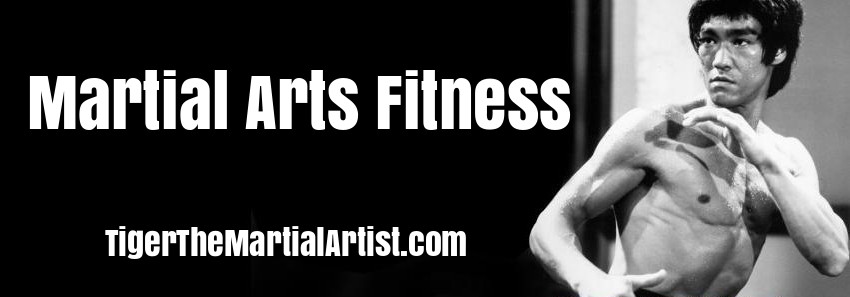Click Here To Subscribe To Your FREE Martial Arts Fitness Magazine
Learn Bruce Lee's Secrets
Click Here Now!By: Jeffrey Miller Ninjutsu Martial Arts Strategy:
Key Moments & Phases in a
Self-Defense SituationA major pivoting point in my ninjutsu martial arts learning process happened when I realized that there was something more going on than just the punching, kicking, and what-not, that makes up conventional martial arts and self-defense training. In fact, once I saw it happening, my mind shifted away from the typical orientation toward this "style" or that, and started looking beyond the techniques themselves to...
...what was being "done" by each move in a technique string.
The question I began to ask was, "what's the logic behind the moves?" And, "why are the moves where they are in this particular string?"
And THAT is what the book, "Controlling the Fight: The 5 Keys of Effective Self-Defense Strategy," is all about.
It's about understanding and recognizing the keys, or bridges, between one phase...
...one strategic moment...
...in a self-defense situation, and another.
It's about controlling the "pieces" of a fight-scenario that must be strategically managed in the correct order, and at the correct time, if you are to be successful.
What are these critical moments within the flow of the fight? Let me first tell you what they're NOT.
They are not...
...when you're fist makes contact with the surface of your assailant's body...
...when you lock his joints to immobilize him and prevent him from continuing to fight...
...when you take up your "way-cool" stance...
...the way with which you've been taught to hold your weapon, or...
...a hundred other "things" that most books, videos, and schools of martial arts and self-defense focus almost exclusively on.
But, they are not NOT these things either. If you don't understand what I'm trying to point out here, you won't see it.
Confused? Don't be.
The point here is that, behind any move or technique itself - the punch, lock, throw, etc. - there is a "reason" that THAT particular technique is being done at THAT way, and at THAT particular time. There is something that the technique is either doing 'for' us or 'to' our attacker that gains, maintains, or accentuates our control of the situation. In short...
...there is something that makes a particular technique RIGHT and APPROPRIATE for any given moment...
...and completely WRONG for another.
And, make no mistake here. We are talking about a scientific application of principles that work, and have worked for centuries. And, this science works...
...for whoever is knowledgeable of, and in control of it in the fight!
What it means is this; if you know how to use this scientific application and make it the logic behind your strategic use of your skills and techniques, then you will probably win. If you don't and your assailant does, you will lose.
So, what are these key moments or critical phases?
They are...
1) Your ability to assess your situation and understand what the assailant is doing or attempting to do to you.
2) Your defense against his incoming attacks. This is your ability to neutralize the effect that his attacks were to have on you.
3) How you unbalance him in a way that prevents your assailant from going on with his own strategy and literally puts him in a position of weakness.
4) The actual counter-attack that you use to knock him back or take him to the ground. This is the phase where you actually take the fight to him.
5) Your ability to assess the effect that your technique has had on your assailant and what your next move (escape, restrain him, or prepare for another barrage of attacks) should be.
In my attempt to learn how to really be successful at defending myself and others, I was lucky enough to find some teachers who could point the way towards many of these answers. Unfortunately (or fortunately, as this caused me to have to really look), we're not talking about the step-by-step mechanics of the "style" here, as these can be taught by practically anyone to almost anyone else. What we ARE talking about is something that cannot be seen unless you know what you're looking for. It's invisible to the naked eye but there nonetheless.
Just know this. Each of these critical moments - these keys - is an important, no crucial, element in any overall defense strategy. But, where the book "The Karate-Myth" focused on the big-picture defense strategy that lead from General Awareness to Actually having to Deal with the Attacker (remember?), what I'm talking about here is the little-picture strategy of phase 6 - "dealing with the attack."
Where an overall general self-defense strategy is ultimately designed to "avoid" dangerous situations altogether; this life-saving knowledge is all about effectively and efficiently handling one one you find yourself in it.
And, when the "rubber-meets-the-road," so-to-speak...
...it doesn't matter how many way-cool techniques you know, so much as...
...what you can "do" with them.
About the Author: Jeffrey Miller is the founder and master instructor of Warrior Concepts International. He is the author of "The Karate-Myth" and the Danger Prevention Tactics video, among others. For more info, subscribe to his ezine here. http://www.warrior-concepts-online.com/newsletter.html
Click Here To Subscribe To Your FREE Martial Arts Fitness Magazine
Home | Articles | Exercise | Workouts | Nutrition | Links

